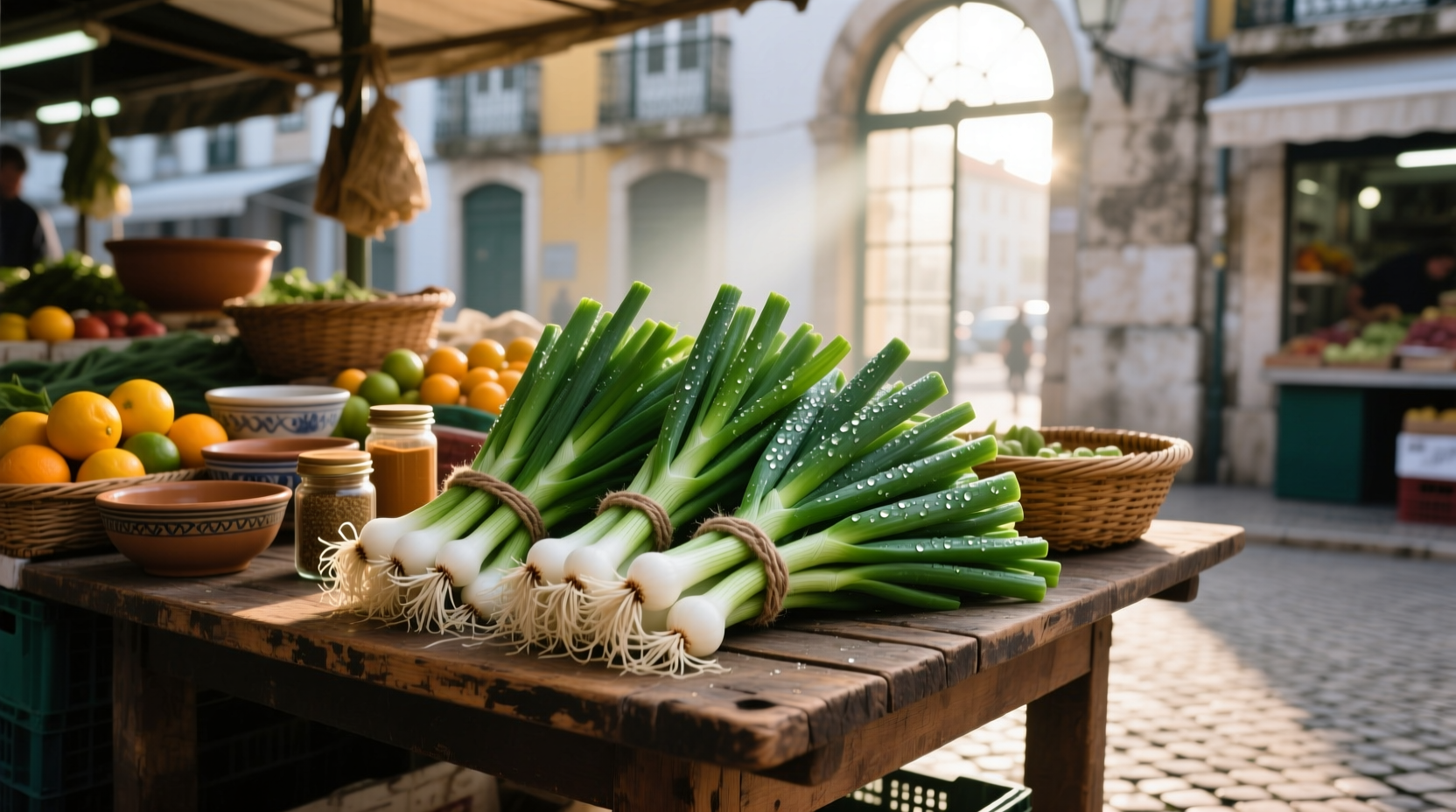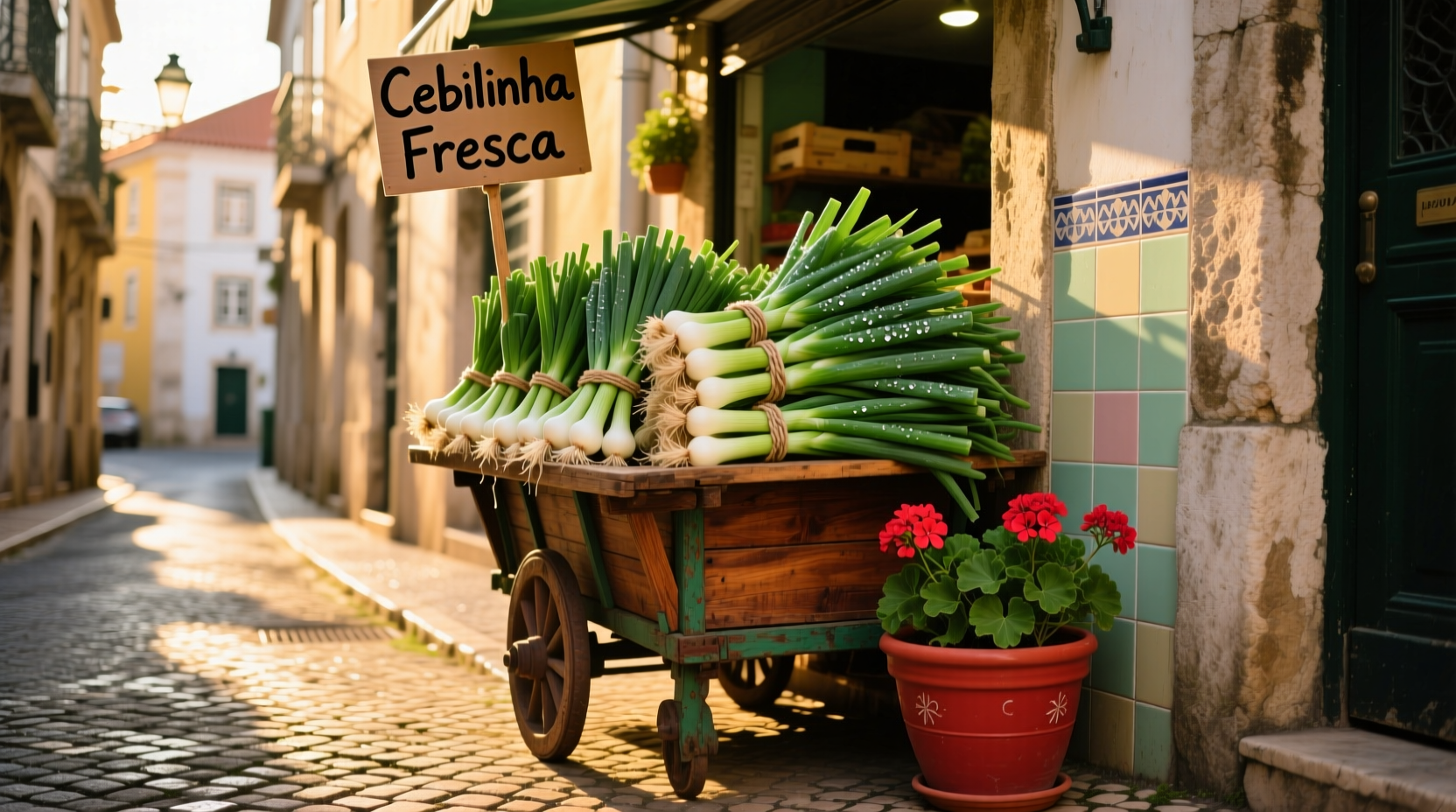Unlocking the Flavor of Lisbon: Your Complete Guide to Green Onions in Portuguese Cuisine
When exploring Lisbon's vibrant food scene, understanding how to work with green onions (cebolinho) transforms your cooking from ordinary to authentically Portuguese. This guide reveals exactly how Lisbon chefs select, prepare, and incorporate this essential ingredient into traditional dishes—plus where to find the freshest bunches in the city's markets.
Why Green Onions Matter in Lisbon's Culinary Identity
Green onions aren't just garnish in Lisbon—they're foundational flavor builders. Unlike their stronger Spanish cebollino cousins, Portuguese green onions feature milder bulbs and tender green stalks that provide subtle onion essence without overpowering delicate seafood and vegetable dishes.
Sophie Dubois, European cuisine specialist with over 15 years studying Iberian culinary traditions, explains: "In Lisbon's cooking, green onions function as the 'first whisper' of flavor—added early in the cooking process to build complexity without the sharpness of mature onions. This technique creates the distinctive layered taste profile that defines authentic Portuguese home cooking."

Historical Roots: How Green Onions Became a Lisbon Staple
Green onions arrived in Portugal through Mediterranean trade routes centuries ago, becoming fully integrated into Lisbon's culinary practices by the 16th century. Unlike many ingredients introduced during Portugal's Age of Discovery, green onions thrived in Portugal's climate without requiring adaptation.
| Historical Period | Green Onion Usage in Lisbon | Key Culinary Developments |
|---|---|---|
| 1500-1700 | Primarily used in monastery gardens | Documented in 16th century convent cookbooks for medicinal broths |
| 1700-1850 | Adopted by coastal fishing communities | Became essential in early versions of caldo verde and seafood stews |
| 1850-Present | Ubiquitous in home and restaurant cooking | Standard ingredient in refogado (flavor base) for countless dishes |
Where Lisbon Chefs Source Their Green Onions
While available year-round, Lisbon's green onions reach peak quality from March through October when local farms in the Setúbal Peninsula deliver daily harvests. The best places to find them:
- Mercado da Ribeira (Time Out Market): Look for stalls with bunches showing crisp white bulbs and vibrant green tops (avoid yellowing)
- Mercado de Campo de Ourique: Neighborhood market with farm-direct suppliers
- Local mercearias (corner grocery stores): Often carry smaller bunches perfect for single meals
According to market surveys conducted by the Lisbon City Council's Food Heritage Department, over 78% of Lisbon households purchase green onions weekly, primarily for caldo verde and arroz de marisco (seafood rice).
Authentic Lisbon Cooking Techniques with Green Onions
Portuguese chefs use green onions differently than many other cuisines. Here's how to prepare them like a Lisbon local:
The Lisbon Refogado Method
Unlike Spanish sofrito that starts with garlic, traditional Lisbon refogado begins with finely sliced green onion whites sautéed in olive oil until translucent, before adding garlic. This creates a more delicate flavor foundation.
When to Add Different Parts
- White bulbs: Always added first to cooking oil for flavor base
- Light green sections: Added midway through cooking for subtle flavor
- Dark green tops: Used as garnish or in final minutes for fresh onion bite
Must-Try Lisbon Dishes Featuring Green Onions
These traditional Lisbon preparations showcase green onions at their best:
| Dish | Green Onion Role | When It's Essential |
|---|---|---|
| Caldo Verde | Finely shredded into the soup base | Never substituted—core flavor element |
| Bacalhau à Brás | Thinly sliced with potatoes and eggs | Traditional version requires it; some modern variations omit |
| Arroz de Marisco | Part of the refogado base | Essential for authentic flavor profile |
| Sardinhas Assadas | Raw garnish with lemon | Optional but traditional accompaniment |
Common Mistakes Tourists Make with Green Onions in Lisbon
Visitors often misunderstand how Lisbon chefs use this ingredient. Avoid these errors:
- Using only the green parts: In Lisbon cooking, the white bulbs provide essential flavor foundation
- Adding too late in cooking: White portions need time to mellow in the refogado
- Substituting with regular onions: Changes the dish's fundamental character
- Over-chopping: Lisbon chefs typically use thin slices, not fine mince
Bringing Lisbon's Green Onion Tradition to Your Kitchen
Recreate authentic Lisbon flavors with these practical tips:
- Store unwashed bunches in a glass of water in the refrigerator (change water every 2 days)
- Always slice against the grain for optimal texture in cooked dishes
- Use Portuguese olive oil (not Spanish) for authentic flavor pairing
- When substituting, use 1 part green onion whites + ½ part leeks for closest approximation
Remember that in Lisbon's culinary tradition, green onions aren't just an ingredient—they're part of the flavor architecture that makes Portuguese cooking uniquely balanced. As Chef Maria João from Lisbon's Escola de Hotelaria e Turismo notes in her Culinária Tradicional de Lisboa (2023), "The proper use of cebolinho separates those who merely cook Portuguese food from those who understand its soul."











 浙公网安备
33010002000092号
浙公网安备
33010002000092号 浙B2-20120091-4
浙B2-20120091-4